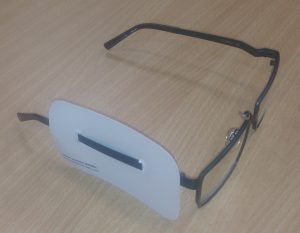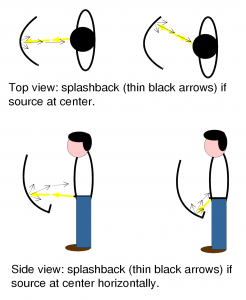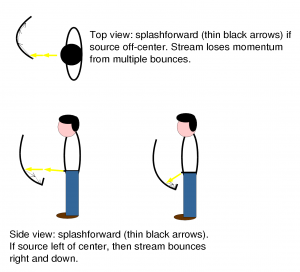Spectacle shops try to sell customers more expensive lenses with glare-reducing coatings. Such coatings are often fragile, which benefits the sellers, because the glare-reducing lenses would need frequent replacement. Another way to reduce glare reflecting into the eye is to find its source and block it. For example, standard flat-lens eyeglasses reflect rays coming from behind and slightly to the side into the eye. If the light source behind can be eliminated, e.g. curtains drawn across a window, then the glare disappears.
There may be many sources of light that reflect from the glasses into the eye, for example due to multiple head orientations and light sources all around. In that case, blocking the light at the source is infeasible, but the rays causing glare can still be blocked closer to the eye. One way is to put side panels on the earpieces of the glasses. The side panel must touch the head with the edge closer to one’s back, so rays from behind cannot get between the earpiece and the head, so cannot reflect off the lens into the eye. The side panels can be cut from cardboard and slipped on the earpieces, as shown in the photo below.
The side panels will also block unwanted light coming from one side into one eye directly (without reflecting off the lens). An example is the Sun shining through a window to the side, causing eye strain.


